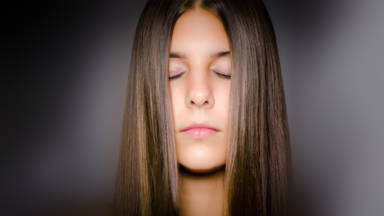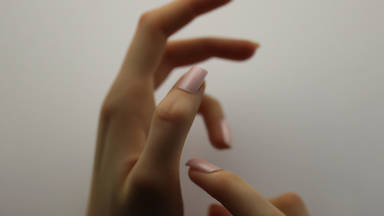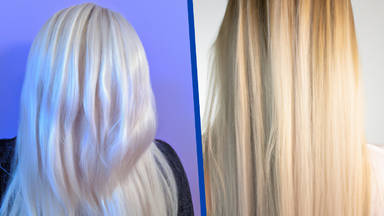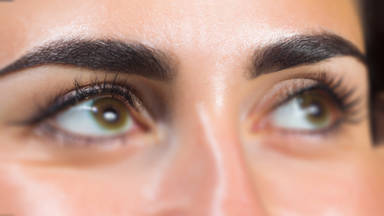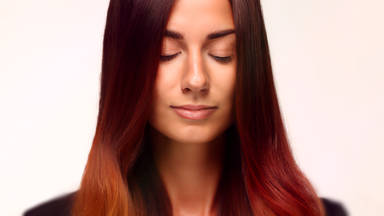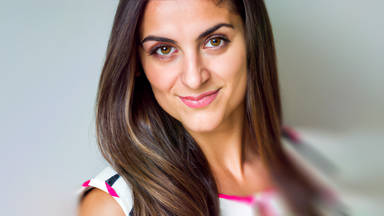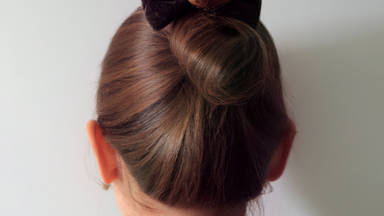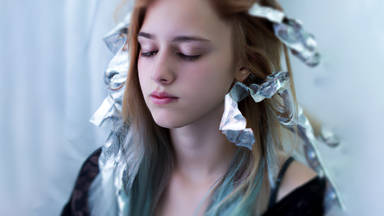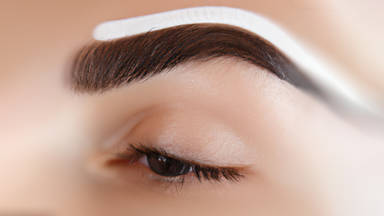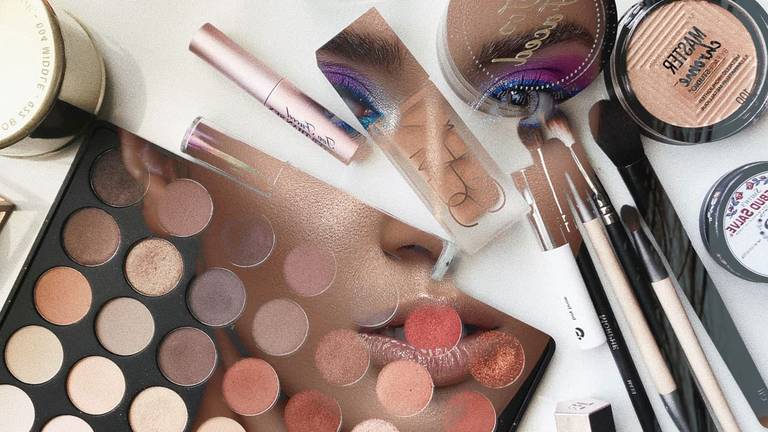
In this tutorial, I will discuss some theoretical concepts about makeup. If you would like to learn how to apply professional makeup, including bridal makeup, you need to pay attention to a few things.
While the new product offerings on the market have made the makeup process a lot easier, I still want to give you a broad view of what you need to think about when you start the makeup process. One of the most important factors in makeup is applying the basis for the skin and preparing the skin. Preparing the skin correctly is the most important step in our makeup because if the skin is not prepared correctly, we will have problems with our makeup, even if we use the best products available. Consequently, we should prepare the skin before beginning our makeup.
Mainly, there are four different skin types:
The first category is natural skin. Natural skin is like a child’s skin. It is free from skin issues, it is clear, it does not have acne and it is not allergic to anything. The skin type is easy to work with, and you can apply material such as foundations and cream powders from a variety of brands.
The second skin type is oily skin, which tends to be prone to acne and some other issues. Oily skin requires its own techniques and preparation materials.
The third skin type is dry skin. This type of skin is usually opaque, and requires different materials to care for. Because dry skin is sensitive to detergents, washing, and sunlight, you will need to use special products.
Next, we have mixed skin. Mixed skin is both oily and dry. You usually have an oily T-zone, which is the forehead, but dry on the cheeks and nose.
Lastly, we have Couperose (Rosecea) skin, which has very thin skin and visible micro-veins. This type of skin is very sensitive. It is not easy to work with this skin type, and if you don't handle it gently, the skin will react, turn red, and ultimately stop the skincare process.
There are three ways to identify the skin type.
The first method for determining skin type is to simply examine the skin. If the skin appears bright or if there are acnes, it might be classified as oily, or if the skin looks clear, it could mean that the skin is natural. However, If you cannot identify the skin type simply by looking at it, you can do so by touching it with the back of your hand. The skin is oily if you notice small bumps. If it is dry, the skin is dry. This is how you can recognize the skin by simply touching the surface.
However, there is a third way. If you cannot recognize the skin type using the previous methods to apply the correct material, you can consult the person and ask her how she feels each time after taking a shower.
Those with oily skin feel very comfortable after each shower, as the excess oil on the skin has been removed, and the skin feels softer. Those with dry skin feel tight and rough after each shower.
Skin cleansing
Because the skin is constantly in contact with environmental factors such as pollution and must breathe in air, it becomes dirty. You cannot apply good makeup if the surface is not clean of these elements. Skin cleansing can be done before makeup or as a stand-alone procedure in your salon. To begin a standalone skin cleansing procedure, massage the skin with a cleansing milk product. Because facial skin is inactive by nature, massaging it stimulates it, increases blood flow, and makes the skin brighter and clearer. As a result, our first step is to massage the skin with massage oil or cleansing milk.
How to massage the skin
This is an important step in the process that you should understand. During the massage, all movements should be upward in general. We all know that the skin sags with age, and proper skin massage can help lift the skin. Therefore, massage is an essential component of facial cleansing.
The second step is to use a lotion to eliminate any residual oil from the skin cream or oil used for the massage. Cleaning the face with a pad or piece of cotton and the lotion should be done in upward movements.
You must now clean your face and use fumigation to eradicate the acne. You can boost the efficacy of a fumigation by adding chamomile or rose water to the mix. We can begin cleaning the skin after fumigating it.
Scrubbing softens and cleans the skin while removing all environmental contaminants from the surface. Keep in mind that if your skin has acne breakouts, you should avoid massaging it too much because you could irritate or produce an allergic reaction.
After massaging the skin, using the lotion, and fumigating it, it is time to use the skin scrub. After which, must apply a different massage technique.
For the this massage, use your index and second fingers to rub the skin upward in circular rotations. The skin is clean and ready to be nourished after the scrub.
The purpose of the skin mask you employ during this procedure is to nourish the skin. The type of skin mask we use is determined by the type of skin. Whether you have dry, oily, or any other type of skin. Allow the mask to sit on the skin for 20 minutes. In general, you should allow any form of hair or skin mask sit on your hair or skin for twenty minutes.
Masks occur in a variety of forms, including gel, sheets, and cream, and are used to treat various skin conditions. We should apply a sun-blocking cream after applying the mask and nourishing the skin. A protective cream will be applied before the sunscreen.
It is recommended that you stay at home for a few hours after a skin cleansing procedure, since the skin is free of pollutants and will be more susceptible to environmental influences.
We have completed the skin cleansing and protective steps and are ready to begin the makeup application.
Applying the makeup
Generally, face normalization and makeup are two distinct operations, however we normally do not stop with normalization and continue with cosmetics to improve the appearance of the face. If we were to talk about the history of makeup, we would have to go back to the Stone Age.
Nonetheless, let’s talk more about how we think about face normalization and the strategies we employ. Normalization is normally done by formulating facial criteria and sizes. Mathematics plays an important role in the normalization and makeup of faces.
We can apply makeup and normalize the face by following a mathematical triangle. Different cultures define beauty in different ways, but in general, attractiveness is determined by the shape of the face. Faces differ from one another in terms of size and natural geometric form. An oval-shaped face is typically known as a normal form, and we can employ contour to change a face's geometric form if it has a different shape.
Today, cosmetic specialists have varied opinions, but we still aim to balance the sizes based on the face's natural shape. This indicates that the sizes should be equal starting from the top of the forehead and running down to the middle of the brows, then down to the tip of the nose, and finally to the base of the chin.
To see the true form of the face, place two hands beneath the jawline and the back of the cheeks.
According to one theory, the geometric shape of a person's face corresponds to their personality. People with rectangular faces, for example, are more conservative and reserved, whereas those with square faces are thinkers. Regardless, as cosmetic specialists, we must emphasize the strengths and conceal the flaws when it comes to makeup, and we do so using cosmetic and makeup principles. The highlights and colors generated on the face when light shines on it affect the emotion and mimic of our face. During face normalization, we employ these highlights and dark tones to cover facial flaws and enhance its beauty.
New ways have been added recently, which I will also discuss. Color palettes, shadowing palettes, derma colors, supra colors, and various oily and dry cream powders were once the first makeup products used for normalization. These items are generally utilized for cinematic makeup these days, and there are better materials on the market that can make your task lot easier. Using high-quality material is one of the things you should do to improve your performance. Regardless matter how much information you have, how professional you are, or how many years of experience you have in this sector, you must employ high-quality material if you want to be the best and have a lot of clients. Your success depends on how satisfied your clients are with your work, and these clients will not be happy if you use cheap products.
Furthermore, superior material will make your job lot easier and faster, as well as produce far better results. The application of makeup has grown considerably easier in recent years, with foundations, under base materials, and primers readily available on the market to aid in the advancement of your task.
Let us discuss primers and what they are. Primers are materials that are applied before foundation and come in a variety of forms. Liquid primers, solid primers, and brightening primers are all available. Primers can help to shut open pores on the skin, smooth it out, and extend the life of the cosmetics foundation. Hence, the type of primer used is crucial.
Let's look at how we should use our primer now. Ions are released as you massage the primer into the skin with your hand. When applying the primer, massage the skin by just touching it with your finger. It is critical to understand how to utilize the items; simply purchasing high-quality products without understanding how to use them or how long it takes for them to take effect will render them ineffective.
The primer must be applied to a clean face, and if it is used before a thorough scrubbing, the primer will not work. You can use a cold compress or combine an Acetaminophen tablet with milk and apply it to the skin if you have a customer who has limited time or is too fatigued to sit for hours and whose face appears worn and strained. This will make the skin feel less weary and stressed.
Your work will be considerably more difficult if your skin is tired and agitated. The skin is made up of live tissue cells that react to various stimuli. Even if you put up your best effort on weary and worried skin, you will not achieve satisfactory results. You will always obtain greater results if you transfer your calm to the client and properly prepare the skin. Different primers should be left on the skin for various amounts of time. Some should be left on for three minutes, others for five, and still others for ten minutes.
You can begin working with the foundation after applying the primer. There are a variety of foundation materials, including liquids, creams, moisturizers, and foundations that you may mix and apply to your face.
You have a few options for how to go about normalizing and applying makeup. It is necessary to utilize three different colors when you are normalizing and applying makeup.
The first is the foundation color, which we select based on the natural tone of the skin. The foundation color should be no more than two shades lighter or darker than your natural skin tone. You must progressively lighten or darken the skin if you want it to be more than two shades lighter or darker than its natural hue. If you have a skin tone that is below level one and wish to get it to level five, going all the way darker in one step will not give you a decent result. You'll need to get it to level three before moving on to level five, or vice versa.
This is how we select and apply our foundation color. Normalization and cosmetics are similar to painting in that we cover the face with a fundamental color called foundation, much like the painter covers the canvas with a basic color. We now require two additional hues, one light and one dark. These two hues can be used to continue the normalizing process. One dark contour color and one light contour color, both of which should be paler than the foundation we used. For the highlights that we can employ to accentuate certain features, such as the tops of the cheeks and the length of the nose.
The highlight is usually applied to a few particular parts of the face, such as the middle of the forehead, chin, two sides of the nose, cheeks, and beneath the eyes, while the darker shade is applied to the rest of the face.
You can either use three distinct colors and then fade them after application, or you can choose the foundation color and then contour and highlight the face with dark and light hues. We now have a new technique known as strobing. The term "strobing" refers to the process of putting a shine on one's face. We also utilize strobing after contour and highlight in some cosmetics, such as Brazilian makeup, which also incorporates the strobing technique.
In this article, We have discussed about why it is important to clean the skin, understand foundations, use primers, know the timing of each product, tell the difference between different eye types, and recognize strengths and weaknesses in makeup.
The other thing I want to mention is the use of fillers, as it is possible to hide wrinkles with fillers. Additionally, Instant Botox can be used to remove wrinkles for twenty-four hours and helps you with makeup.
If you wish to work in this field, it is critical that you learn and comprehend the procedures in order to be successful. You can be sure of getting a great result if you know how to use the products, know when they should be used, and work with calm and precision.
